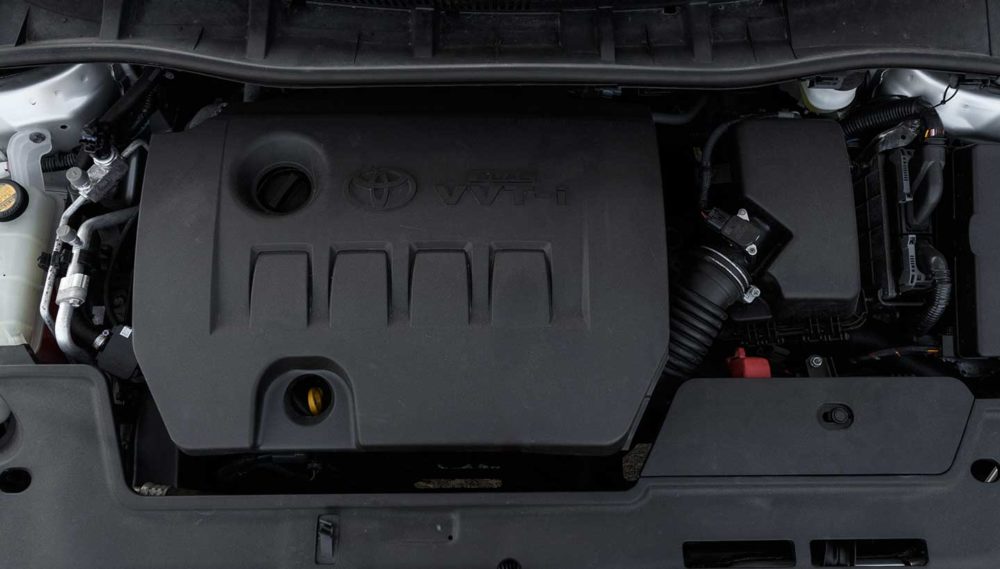About Car Engine Capacity and How to Calculate It
18 April, 2024

The engine is an important part that produces power to move all components in the car so that they can move properly. This car engine, which consists of various components, has a combustion chamber which makes a difference in engine capacity.
The engine capacity of one car and another is of course different, which is usually known as cubic centimeters (CC). From here the car engine will have differences in performance and also differences in fuel consumption.
In general, if a car’s engine capacity is large, fuel consumption will automatically be more wasteful than a small engine capacity. So it is important for you to have a car that suits your needs.
Until now, many cars have engines designed to have optimal performance, but still have efficient fuel consumption. One of them is the Wuling Alvez, with an engine with a capacity of 1,500cc/1.5L, featuring extraordinary powertrain technology.
The DVVT, DOHC inline-4 cylinder engine, supported by a 105 horsepower motor at 5,800 rpm and 143 Nm of torque provides amazing performance in this vehicle.
The type of transmission on the Wuling Alvez is a CVT transmission. This transmission not only provides driving comfort, but also helps maintain engine rotation so that it continues to provide maximum power. The following is a review of car engines, starting from understanding them to how to calculate their capacity.
Understanding Car Engines
The engine is the main component in a car that is responsible for producing the power needed to move the car. This engine is also known as an internal combustion engine because the fuel combustion process occurs in the engine cylinder.
As an important component, a car engine has the function of converting chemical energy from fuel into mechanical energy. This process occurs through a series of combustion steps which produce an up and down movement of the piston which is then transmitted into rotational movement of the crankshaft.
The car engine itself consists of several main parts, including:
-
Cylinder
The component where fuel combustion occurs. Engines can have one cylinder (as in a single-cylinder engine) or multiple cylinders (e.g. a four-cylinder or six-cylinder engine).
-
Pistons
Components that move up and down in the cylinder in response to combustion pressure.
-
Crankshaft
The main shaft receives the up and down movement of the piston and converts it into rotational movement that can be used to move the car wheels.
-
Cylinder Head
The upper part of the cylinder that contains the valve, spark plug, and intake and exhaust passages.
-
Valve
Components that regulate the flow of air and fuel into the cylinder and the combustion gases leaving the cylinder.

Calculating Car Engine Capacity
Car engine capacity, also known as Cubic Centimeters (CC), is the capacity resulting from the action of the piston in the combustion engine cylinder in units of cm3. Engine capacity functions to regulate the power and speed produced, as well as optimize fuel use.
The larger the engine capacity, the more fuel it uses because the engine’s capacity to breathe a mixture of fuel and air is greater. Engine capacity can be measured in cc, liters (l), or cubic inches (CID).
For those of you who want to know the capacity of the car, you can use two formulas, namely the cylinder volume formula and the combustion chamber formula.
-
Formula for Calculating Tube Volume
For example, if a car has a tube radius of 6 cm with a tube length of 8 cm. Then the volume of the cylinder is:
Phi x (r x r) x t = 22/7 x( 6 x 6) x 8 = 904.32cc
-
Formula for Calculating Combustion Space
To calculate the capacity of a car using a combustion chamber, you can use the example if the radius of the tube of a car is 6cm, where the diameter of the tube means 12cm and the height or area of the piston (L) is 8cm. The combustion volume is: 22/7/4 x (12 x 12) x 8 = 904.32 cc.
However, to find out the volume of the combustion chamber directly based on the performance of the piston, you can simply calculate the stroke volume of the piston, the area through which the piston passes, or the stroke, which is represented by the letter L. Bore (D) is the diameter of the original combustion chamber, and the working stroke or height tubes are represented by strokes.
The formula for calculating the volume of the combustion chamber directly based on the performance of the piston is as follows:
- D (Bore) = 86 mm atau 8,6 cm
- L (Stroke) = 86 mm atau 8,6 cm
Combustion chamber volume = 3.14/4 x (8.6 x 8.6) x 8.6 = 0.785 x 73.96 x 8.6 = 499.31 cc
The volume calculated above is the volume for one cylinder or one combustion chamber only. If a car has a 4 cylinder engine then we can multiply by 4, so 499.31 x 4 = 1997.22 cc.
Car Engine Weight
Car engine weight generally ranges from several hundred to over a thousand pounds (lb) or kilograms (kg), depending on the type of car and engine specifications. For example, a four-cylinder petrol engine with a capacity of two liters may weigh around 150 to 200 kg, while a six-cylinder diesel engine with a larger capacity may weigh more than 300 kg.
Keep in mind that engine weight is one of many car design factors that affect a car’s performance, fuel efficiency and stability. The automotive industry continues to innovate to reduce engine weight while still having high performance and reliability.
After reading the explanation regarding the meaning of machine and how to calculate its capacity, now it will be easier when you want to measure the combustion chamber capacity yourself.



